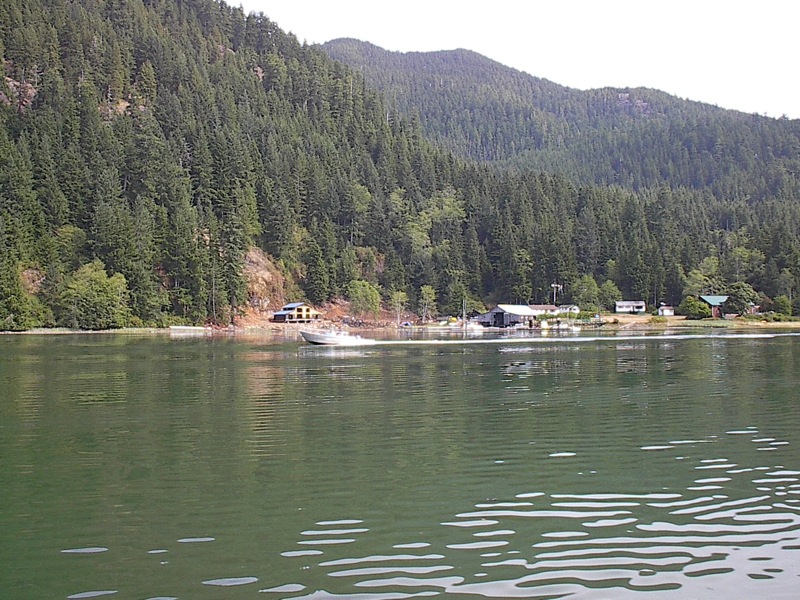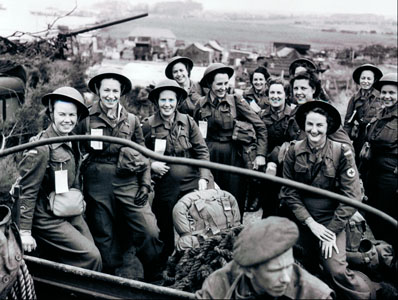Browse "People"
-
Article
Norval Morrisseau
Norval Morrisseau (called Miskwaabik Animiiki in Anishinaabemowin, meaning “Copper Thunderbird”), CM, artist (born 14 March 1931 or 1932 in Northern Ontario; died 4 December 2007 in Toronto, ON). Morrisseau was a self-taught artist of Ojibwe ancestry. He is best known for originating the Woodland School style in contemporary Indigenous art. His deep spirituality and cultural connections guided his career, which spanned five decades. Morrisseau is considered a trailblazer for contemporary Indigenous artists across Canada.
"https://d2ttikhf7xbzbs.cloudfront.net/TCE_placeholder.png" // resources/views/front/categories/view.blade.php
https://d2ttikhf7xbzbs.cloudfront.net/TCE_placeholder.png
-
Article
Norwegian Music in Canada
It is believed that the Norse (Vikings) visited North America around the year 1000. However, people from modern Norway, the western kingdom of the Scandinavian peninsula, immigrated to Canada from the USA during the 1890s and moved into the Prairies and particularly to British Columbia, whose coastline so closely resembled that of their homeland. In 1986 there were 243,675 people of Norwegian origin living in Canada (191,000 in British Columbia, Alberta, and Saskatchewan). Those born in Canada numbered 224,000, and of the 20,000 immigrants 2,000 arrived in the period 1977-86.
"https://development.thecanadianencyclopedia.ca/images/tce_placeholder.jpg?v=e9dca980c9bdb3aa11e832e7ea94f5d9" // resources/views/front/categories/view.blade.php
https://development.thecanadianencyclopedia.ca/images/tce_placeholder.jpg?v=e9dca980c9bdb3aa11e832e7ea94f5d9
-
Article
Norwegian Canadians
Norway is a Scandinavian country in northwestern Europe. It is bordered by Sweden, Finland and Russia. Permanent Norwegian migration to North America began in 1825 when the first shipload of Norwegians arrived in New York. In 2016, the Canadian census reported 463,275 people of Norwegian origin (35,905 single and 427,370 multiple responses).
"https://d2ttikhf7xbzbs.cloudfront.net/media/media/19f0c1d4-9ab8-469c-b8f2-79b41931b83b.jpg" // resources/views/front/categories/view.blade.php
https://d2ttikhf7xbzbs.cloudfront.net/media/media/19f0c1d4-9ab8-469c-b8f2-79b41931b83b.jpg
-
"https://d2ttikhf7xbzbs.cloudfront.net/media/media/d98defdb-a170-4723-bafb-23ba5d5bf8dd.jpg" // resources/views/front/categories/view.blade.php
https://d2ttikhf7xbzbs.cloudfront.net/media/media/d98defdb-a170-4723-bafb-23ba5d5bf8dd.jpg
-
List
Notable Filmmakers from Quebec
For decades, Quebec directors have been shaping the Canadian film industry. Their works have captivated audiences and critics around the world. Drawing on Quebec's culture and history, these filmmakers contribute to reflections on the country's francophone experience. The following people are some of the most important figures in Quebec cinema.
"https://d2ttikhf7xbzbs.cloudfront.net/media/media/3fc2649b-c4d7-4fc5-8f8f-d2d67ed75621.jpg" // resources/views/front/categories/view.blade.php
https://d2ttikhf7xbzbs.cloudfront.net/media/media/3fc2649b-c4d7-4fc5-8f8f-d2d67ed75621.jpg
-
List
Notable Indigenous Entrepreneurs in Canada
Indigenous economies thrived long before Europeans arrived in North America and, due to hard work and ingenuity, a growing number of Indigenous entrepreneurs are enjoying success today. Many are demonstrating a blending of traditional values and an Indigenous world view with financial success. The following are but a few of a long list of remarkable Indigenous entrepreneurs running thriving businesses in Canada. (See also Economic Conditions of Indigenous Peoples in Canada.)
"https://d2ttikhf7xbzbs.cloudfront.net/IndigenousEntrepeneurs/JeffWard.jpg" // resources/views/front/categories/view.blade.php
https://d2ttikhf7xbzbs.cloudfront.net/IndigenousEntrepeneurs/JeffWard.jpg
-
List
Notable Women Entrepreneurs in Canadian History
Women have had a long history of entrepreneurship in Canada and their involvement continues to grow. The entrepreneurs listed below are just a few examples of the many women who have made their mark on Canadian business history.
"https://d2ttikhf7xbzbs.cloudfront.net/beverlymascoll/beverlymascoll.jpg" // resources/views/front/categories/view.blade.php
https://d2ttikhf7xbzbs.cloudfront.net/beverlymascoll/beverlymascoll.jpg
-
Article
Nuance
Nuance. Quebec rock group from the Ottawa valley region founded in 1975. It was in 1983, when the singer Sandra Dorion (b Gatineau, Que, 9 Feb 1963) joined the group that Nuance started to become well-known.
"https://development.thecanadianencyclopedia.ca/images/tce_placeholder.jpg?v=e9dca980c9bdb3aa11e832e7ea94f5d9" // resources/views/front/categories/view.blade.php
https://development.thecanadianencyclopedia.ca/images/tce_placeholder.jpg?v=e9dca980c9bdb3aa11e832e7ea94f5d9
-
Article
Nuchatlaht
The Nuchatlaht (“people of the mountain”) are a Nuu-chah-nulth First Nation residing on the northwest coast of Vancouver Island, British Columbia. According to the federal government, the Nuchatlaht numbered 167 registered members, as of October 2021.
"https://d2ttikhf7xbzbs.cloudfront.net/media/media/5a1a5452-f764-4af1-9b30-bbb8db8257dc.jpg" // resources/views/front/categories/view.blade.php
https://d2ttikhf7xbzbs.cloudfront.net/media/media/5a1a5452-f764-4af1-9b30-bbb8db8257dc.jpg
-
Article
Numbered Treaties (Plain-Language Summary)
The Numbered Treaties are a series of 11 treaties. A treaty is an agreement between two or more nations. The Numbered Treaties were signed by the Canadian government and Indigenous people. All 11 treaties were signed between 1871 and 1921. The Numbered Treaties cover parts of British Columbia, Alberta, Saskatchewan, Manitoba, Ontario. They also cover portions of Yukon and the Northwest Territories. The treaties provided the Canadian government with land. The government wanted land for industrial development and white settlement. In exchange, the government promised Indigenous people special rights and benefits. These treaty terms are controversial and contested. The Numbered Treaties have ongoing legal, social, and economic impacts on Indigenous communities. (See also Treaties with Indigenous Peoples in Canada.) (This is a plain-language summary of the Numbered Treaties. If you are interested in reading about this topic in more depth, please see our full-length entry, Numbered Treaties.)
"https://d2ttikhf7xbzbs.cloudfront.net/media/media/4f1d71aa-8b25-417f-a88b-2a078f3b1768.jpg" // resources/views/front/categories/view.blade.php
https://d2ttikhf7xbzbs.cloudfront.net/media/media/4f1d71aa-8b25-417f-a88b-2a078f3b1768.jpg
-
Article
Nunatsiavut
Nunatsiavut (meaning “our beautiful land” in Inuktitut) is the homeland of the Labrador Inuit (Labradormiut). The territory covers 72,520km2 of land and 44,030km2 of sea in the northern part of the Labrador Peninsula. On 1 December 2005, the Labrador Inuit celebrated the creation of the Nunatsiavut Government, their own regional government within the province of Newfoundland and Labrador. The Labradormiut became the first Inuit in Canada to achieve self-government. Of the approximately 6,500 beneficiaries, about 2,500 live within the settlement area in five communities: Rigolet, Postville, Makkovik, Hopedale (the legislative capital) and Nain (the administrative capital).
"https://d2ttikhf7xbzbs.cloudfront.net/media/new_article_images/Nunatsiavut/Nunatsiavut_flag.png" // resources/views/front/categories/view.blade.php
https://d2ttikhf7xbzbs.cloudfront.net/media/new_article_images/Nunatsiavut/Nunatsiavut_flag.png
-
Article
Nunavik
Nunavik, the portion of land within the province of Quebec located north of the 55th parallel, covers approximately 500,000 km2 (representing more than one-third of Quebec’s territory). For approximately 4,000 years, Indigenous people have inhabited Nunavik, including Inuit who have made the region their homeland. Today, over 13,000 people live in Nunavik’s 14 villages spread along the Ungava Bay, Hudson Strait and Eastern Hudson Bay coasts.
"https://development.thecanadianencyclopedia.ca/images/tce_placeholder.jpg?v=e9dca980c9bdb3aa11e832e7ea94f5d9" // resources/views/front/categories/view.blade.php
https://development.thecanadianencyclopedia.ca/images/tce_placeholder.jpg?v=e9dca980c9bdb3aa11e832e7ea94f5d9
-
Article
Nursing Sisters
Women have cared for wounded soldiers throughout Canada's wartime history. "Nursing sisters" carried out official duties with the military during the North-West Resistance, the South African War, the First and Second World Wars, and the Korean War. At least 70 nursing sisters died from enemy action and disease during their service.
"https://d2ttikhf7xbzbs.cloudfront.net/media/vimy_foundation/VF3-4/VF8-11.jpg" // resources/views/front/categories/view.blade.php
https://d2ttikhf7xbzbs.cloudfront.net/media/vimy_foundation/VF3-4/VF8-11.jpg
-
Article
Nursing Sisters and the Costs of War on Women
We celebrate the heroism and mourn the sacrifices of our military through two world wars, and assorted other foreign conflicts and peacekeeping missions. Yet less attention has been paid to the related efforts of women — in particular, the nurses who have built their own proud tradition of service and sacrifice.
"https://d2ttikhf7xbzbs.cloudfront.net/media/media/6c14215f-fcdf-40f6-8934-c77072c307ec.jpg" // resources/views/front/categories/view.blade.php
https://d2ttikhf7xbzbs.cloudfront.net/media/media/6c14215f-fcdf-40f6-8934-c77072c307ec.jpg
-
Article
Nuxalk (Bella Coola)
The Nuxalk are an Indigenous people in Canada. Their traditional territories are in and around Bella Coola, British Columbia. The term "Bella Coola" once referred collectively to the Nuxalk, Talio, Kimsquit and some Kwatna who inhabited villages around North Bentinck Arm and the Bella Coola Valley, South Bentinck Arm, Dean Channel and Kwatna Inlet. Since the late 1970s, the Nuxalk have called themselves the Nuxalk Nation, derived from the term that in earlier times referred exclusively to the people of the Bella Coola Valley. In 2020, the Government of Canada reported the registered population of Nuxalk was 1,786, with 912 people living on reserves. (See also First Nations and Northwest Coast Indigenous Peoples in Canada.)
"https://d2ttikhf7xbzbs.cloudfront.net/media/media/f1d6e60c-9c3c-4aaf-a418-f354cdc47d83.jpg" // resources/views/front/categories/view.blade.php
https://d2ttikhf7xbzbs.cloudfront.net/media/media/f1d6e60c-9c3c-4aaf-a418-f354cdc47d83.jpg
